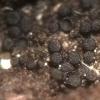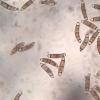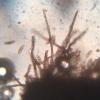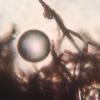
20-01-2026 17:49
 Hardware Tony
Hardware Tony
I offer this collection as a possibility only as e

15-01-2026 15:55
 Lothar Krieglsteiner
Lothar Krieglsteiner
this one is especially interesting for me because

17-01-2026 19:35
Arnold BüschlenHallo, ich suche zu Cosmospora aurantiicola Lite

16-01-2026 00:45
Ethan CrensonHi all, On decorticated hardwood from a New York

18-01-2026 12:24
Hello.An anamorph located on the surface of a thin

08-12-2025 17:37
 Lothar Krieglsteiner
Lothar Krieglsteiner
20.6.25, on branch of Abies infected and thickened
Chaetosphaerella ?
Ethan Crenson,
11-04-2019 06:53
From New York City last weekend, growing on an old Pyrenomycete (Eutypa, probably) I think this is Chaetosphaerella. The small clusters of black fruiting bodies seem somewhat flattened at the apex. They are seated in a dense brown subiculum. I did not see any asci in any of my mounts. Spores are 3-septate, brown with hyaline end cells and guttules in the two inner cells, usually curved. They measured 24-29 x 6-7µm. I'm uncertain if I saw any conidia-- in the final photo there is a bowling-pin shaped brown cell that has two guttules.
Could this be C. fusca or C. phaeostroma? Does the difference come down to the conidia?
Thank you in advance for your help.
Andrew N. Miller,
11-04-2019 14:45

Re : Chaetosphaerella ?
This is C. fusca. The difference is whether or not the ascomata become collabent and the size of the ascospores (longer in C. phaeostroma).
https://www-s.life.illinois.edu/pyrenos/records/show_by_page?page=24
Andy
https://www-s.life.illinois.edu/pyrenos/records/show_by_page?page=24
Andy
Ethan Crenson,
11-04-2019 17:26
Re : Chaetosphaerella ?
Andy, thank you for your help!






